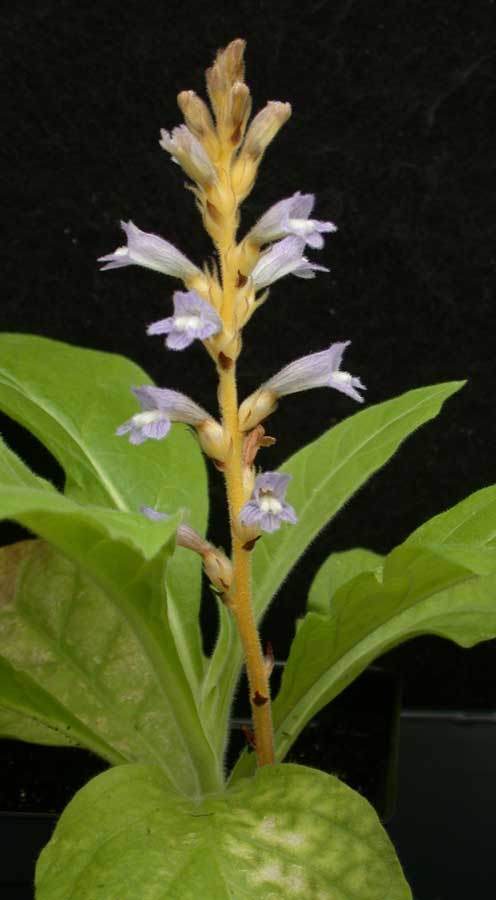Plant scientist leads study on genomics of parasitic plants

Three types of parasitic plants, each exhibiting a different degree to which it needs its host, are the subject of a three-year, $1.5 million study at Virginia Tech to catalogue genes essential to parasitism.
Funded by the National Science Foundation Plant Genome Program, the study examines hard-to-control weeds in the Orobanchaceae family that can wreak havoc on commodity and food crops, especially in developing countries in Africa and the Middle East.
“From a practical point of view, we want to understand these plants better because they devastate yields for potatoes, tomatoes, sunflowers, beans, and cereal crops, among others; and we want to learn how to control them,” said Jim Westwood, associate professor of plant pathology, physiology, and weed science in the College of Agriculture and Life Sciences. “But from a purely scientific point of view, we also want to gain more information about these plant species because of their unique biology. We know little about the genomics of parasitism in plants, and this study will increase our knowledge in this area.”
Westwood and his colleagues are studying three genera within the Orobanchaceae family, each representing a different stage of evolutionary development, and then analyzing this data:
- Westwood is focusing his portion of the study on the Orobanche genus, commonly known as “broomrape.” This genus relies entirely on other plants for nutrients, never photosynthesizing or producing its own chlorophyll.
- Michael Timko, professor of biology at the University of Virginia, is investigating the Striga genus, which will not germinate without a host. Unlike Orobanche, this so-called “witchweed” only needs other plants during its early growth stages and does produce some of its own nutrients through photosynthesis.
- John Yoder, professor of plant sciences at the University of California at Davis, is looking at the genetic material of the Triphysaria genus, sometimes called “owl’s clovers.” Found in the wild dunes of California, this plant only feeds on the nutrients of another plant if it encounters a species it can parasitize.
- Claude dePamphilis, professor of biology at Penn State University, will assist with the bioinformatics analyses needed to decipher the steps in molecular evolution that separate the three focal species.
Westwood, Timko, Yoder, and dePamphilis will compare the DNA of these species with the related, but non-parasitic Mimulus, or “monkey-flower,” genus.
“We know that the amount of genetic material per cell is greater in plants that exhibit increasing levels of parasitism, but we don’t know whether this is because the plant is absorbing the genetic material of its hosts or whether this is a natural part of adaptation,” said Westwood, who adds that a revolution in plant genomics has recently enabled this kind of research.
About the College of Agriculture and Life Sciences Nationally ranked among the top research institutions of its kind, Virginia Tech’s College of Agriculture and Life Sciences focuses on the science and business of living systems through learning, discovery, and engagement. The college’s comprehensive curriculum gives more than 2,400 students in a dozen academic departments a balanced education that ranges from food and fiber production to economics to human health. Students learn from the world’s leading agricultural scientists, who bring the latest science and technology into the classroom.




